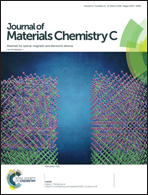Light-emitting diodes of colloidal quantum dots and nanorod heterostructures for future emissive displays
Abstract
Tunable, narrow-linewidth photoluminescence with nearly ideal quantum yields and solution processability make colloidal quantum dots (QDs) a unique class of emitters for a variety of applications including light-emitting diodes (LEDs). Wide color gamut and high color saturation that can be achieved with QDs along with recent advances in QD-LEDs motivate their use as large-area, patternable electroluminescent materials especially in displays. In this review, critical issues in performance and long-term stability of QD-LEDs, Cd-free compositions necessary for practical applications, lower-symmetry heterostructures that impart new capabilities, and unconventional fabrication approaches are discussed. As the current CdSe-based QD-LEDs approach their performance limits, emerging nanorod heterostructures, as exemplified by the double heterojunction nanorods (DHNRs), can extend efficiencies beyond these limits. Furthermore, enhancements in device lifetime and light detection/photovoltaic capabilities using the same high-performance DHNR-LEDs can allow exciting prospects for novel emissive displays. Such multifunctional LEDs that can be solution-processed into large-area, mulitcolor pixel arrays may fundamentally alter how we perceive, interact with and utilize display devices.

- This article is part of the themed collections: Recent Review Articles and 2018 Journal of Materials Chemistry C HOT Papers


 Please wait while we load your content...
Please wait while we load your content...